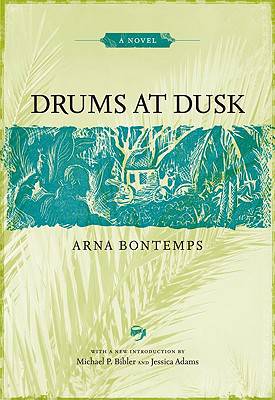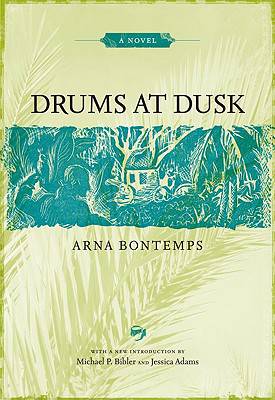
- Retrait gratuit dans votre magasin Club
- 7.000.000 titres dans notre catalogue
- Payer en toute sécurité
- Toujours un magasin près de chez vous
- Retrait gratuit dans votre magasin Club
- 7.000.0000 titres dans notre catalogue
- Payer en toute sécurité
- Toujours un magasin près de chez vous
Description
A story of love, violence, and race set at the outbreak of the Haitian Revolution in 1791, African American writer Arna Bontemps's Drums at Dusk immerses readers in the opulent and brutal -- yet also very fragile -- society of France's richest colony, Saint Domingue. First published in 1939, this novel explores the complex web of tensions connecting wealthy plantation owners, poor whites, free people of color, and the slaves who stunned the colony and the globe by uniting in a carefully planned uprising. The novel's hero, Diron Desautels, a white Creole born in Saint Domingue who belongs to the French antislavery group Société des Amis des Noirs, attempts to spread his message of "liberty, equality, fraternity" in a world fraught with conflict.
Imaginatively inhabiting a wide spectrum of Haitian voices, including those of white indentured servants, female slaves, and Toussaint L'Ouverture, who later emerged as the revolution's best-known hero, Bontemps's work reflects not only the intricacies of Haitian society on the eve of the revolution, but also a black artist's vision of Haiti in the twentieth century, during the U.S. Marines' occupation and at the brink of war in Europe.
A new introduction by Michael P. Bibler and Jessica Adams reveals how Drums at Dusk -- even seventy years after its original publication -- contributes to contemporary studies of the American South as part of the larger plantation region of the Caribbean and inspires a reevaluation of assumptions about revolution, race, and nationalism.
Spécifications
Parties prenantes
- Auteur(s) :
- Editeur:
Contenu
- Nombre de pages :
- 280
- Langue:
- Anglais
- Collection :
Caractéristiques
- EAN:
- 9780807134399
- Date de parution :
- 15-06-09
- Format:
- Livre broché
- Format numérique:
- Trade paperback (VS)
- Dimensions :
- 141 mm x 204 mm
- Poids :
- 344 g

Les avis
Nous publions uniquement les avis qui respectent les conditions requises. Consultez nos conditions pour les avis.






